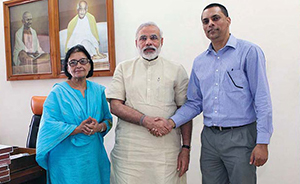“In spite of distance, we are close to one another by heart”
H.E. Mr Gonchig Ganbold responds to questions from India Empire Magazine...
The famous Indian compilation of fables Panchatantra was translated centuries ago in Mongolia in various versions. The great epic of Ramayana of Valmiki found in Mongolia has more than five versions. The sagas of King Bhoj and Lord Krishna, the trilogy of tales about King Vikramaditya and Sanskrit story of thirty-two wooden men are a part of Mongolian folklore. Dandin’s Tale of the Ten Princes, Kavyadarsha a treatise of Sanskrit prosody and Kalidas’s Meghaduta (Cloud Messenger) have been translated time and again and commentaries written on them by several Mongolian scholars. Alikali is an extraordinary manual of Sanskrit with Tibetan and Mongolian translations, which has served as a textbook in Mongolian monasteries for centuries.
Some of these works were available in Mongolia long before the printing of 108 volume of Kanjur and 220 volume of Tanjur later incorporated into them. The Mongolian philosopher and poet Choiji-Odser translated many of them from Sanskrit and many Sanskrit names and notions are common in Mongolia. Professor B. Rinchin has found over 200 such names. In modern times, the first exploratory visit to assess Indian cultural and literary links to Mongolia was carried out by Professor Raghu Vira in December 1955. He was presented with 105 volumes of the Urga Ganjuur Tripitika and photocopies of 220 volumes of Mongolian Tanjur Tripitika, by Primer Yu. Tsedenbal, then (Chandra, ibid, p 80).











Comments.